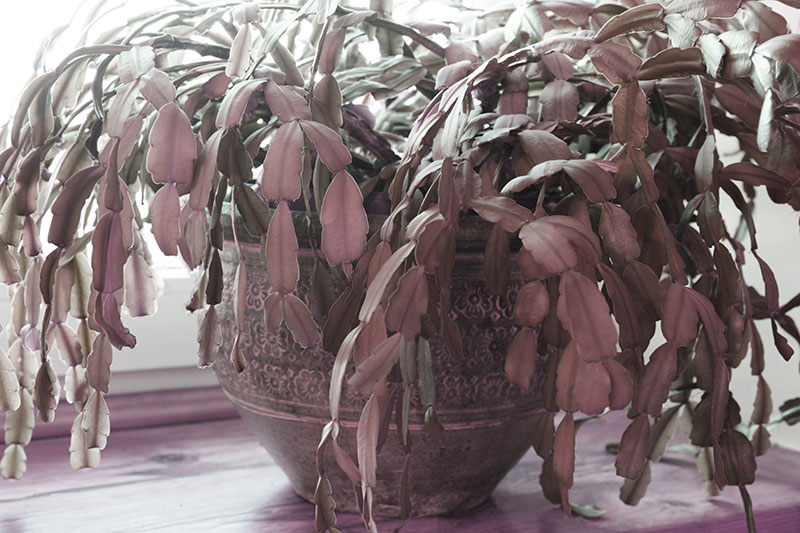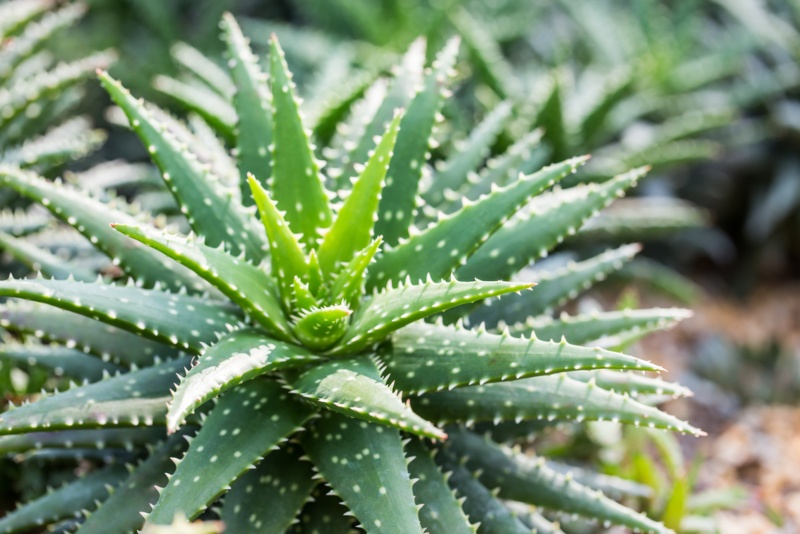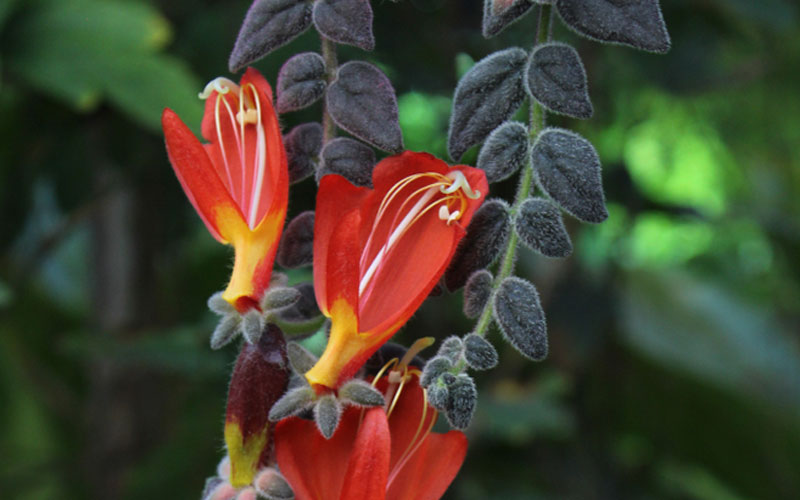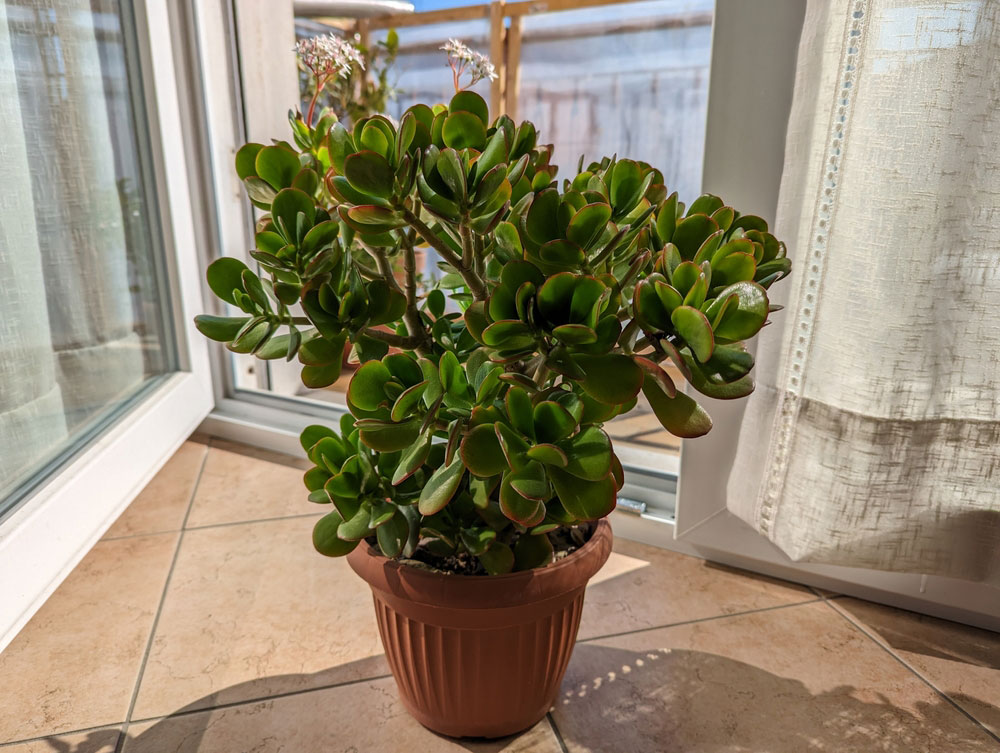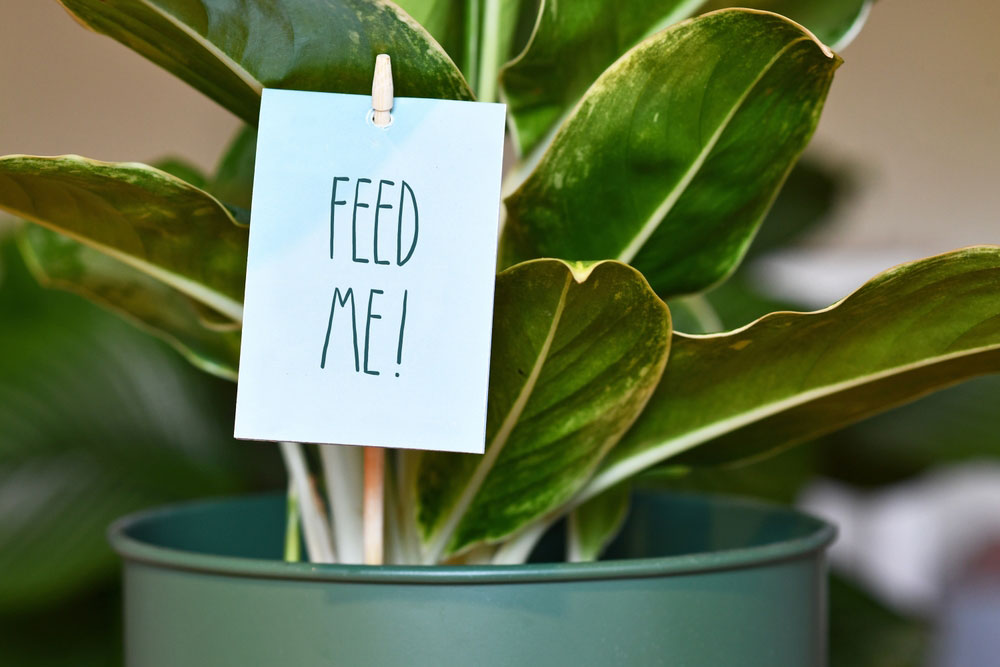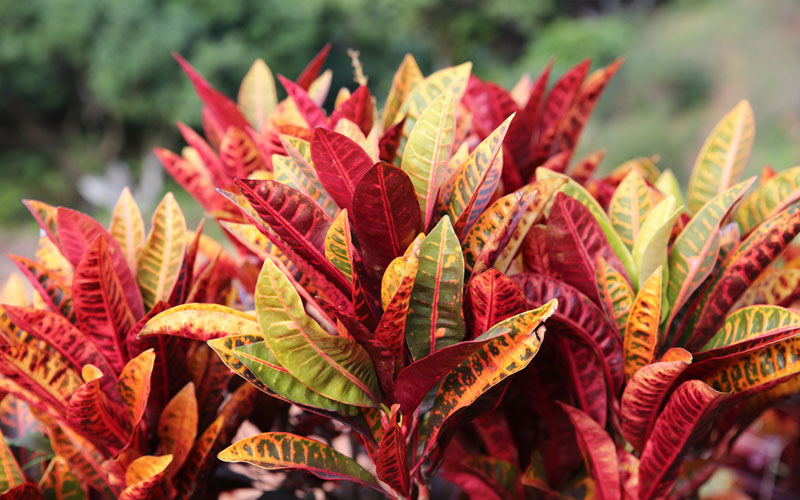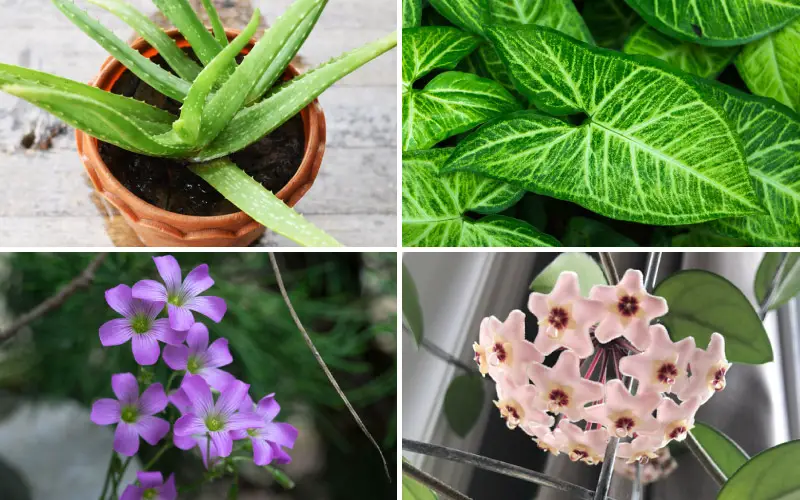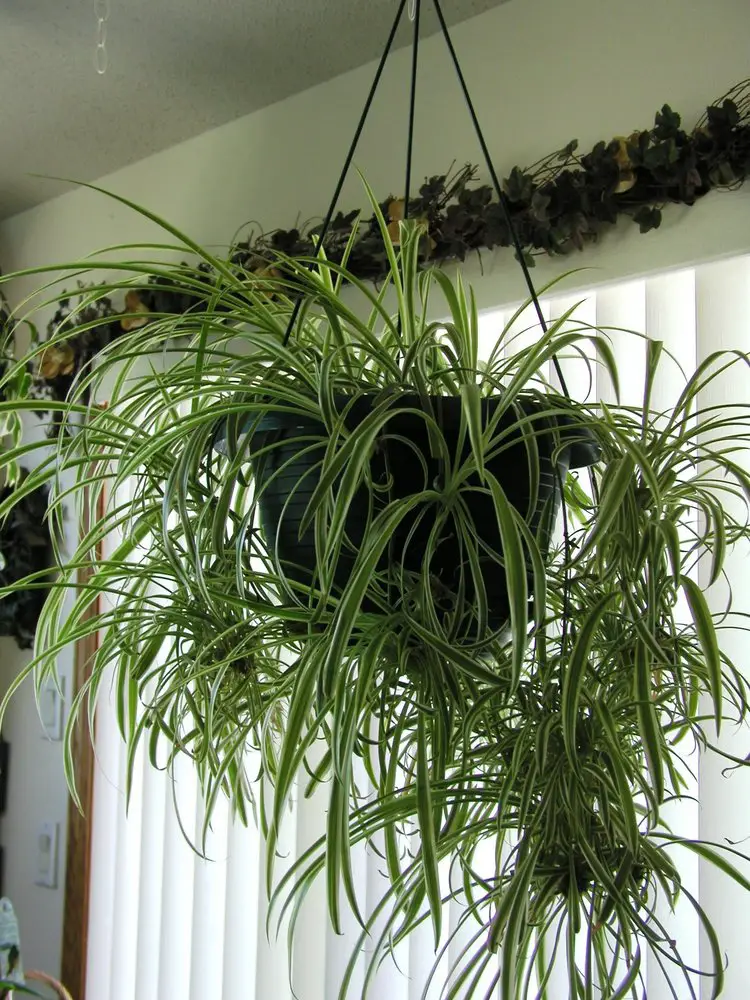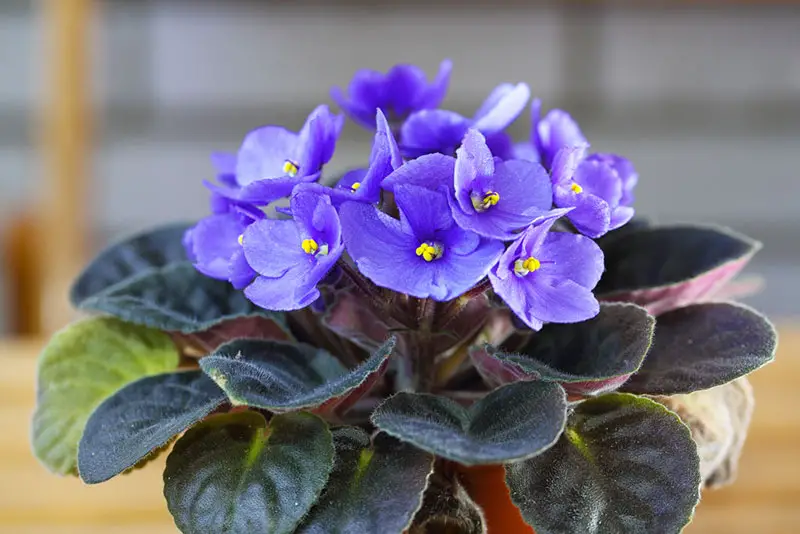
I love my plants, but I also love my cats! Nothing is more important to me than the safety of Misty & Tobey (my pet cats)! When we first welcomed our cats to our home, we had some plants that were toxic to cats, so we had to get rid of them.
The cat-friendly plants listed below are really easy to grow and are non-toxic to cats and dogs. We also include growing and care tips for each of them.
I hope you’ll find this list useful and you bring some of these worry-free houseplants into your home!
African Daisy
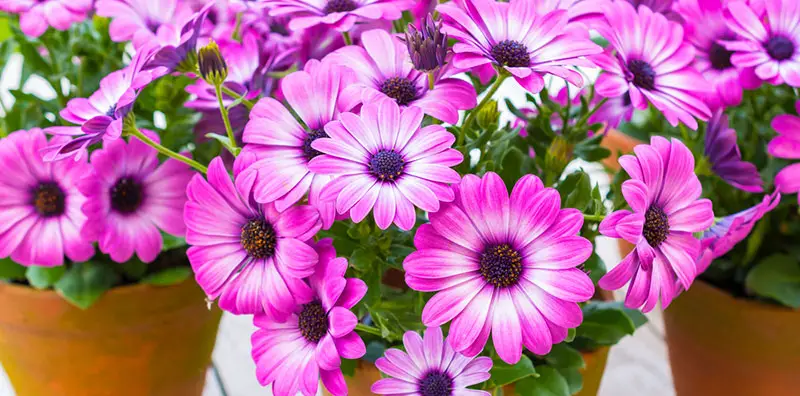
The African Daisy is a gorgeous plant that produces flowers in pink, red, purple and white. This plant is non-toxic to cats. When growing indoors keep in a bright light location. African Daisies will bloom in cooler weather. During the hotter months (July and August), the plant will go dormant.
African Violet

The African Violet needs no introduction, this is one of my favorite houseplants. For this plant to thrive, use a quality soil mix like Espoma African Violet Soil. Always keep the soil moist but not soggy. Never letting it completely dry out. Also, make sure you water it from the bottom up. Avoid direct sunlight. Keep in a location that gets indirect sunlight. African Violets are non-toxic for cats and dogs.
For more information on African Violets, check out this guide on tips for caring for African Violets.
Aluminum Plant
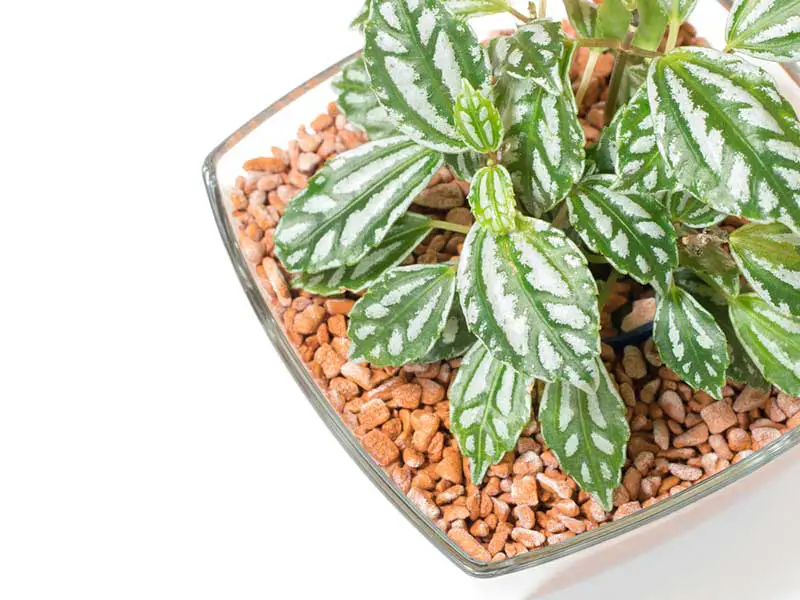
The Aluminum Plant also called the Watermelon plant is easy to grow. It grows best at a room temperature of 60-75 degrees Fahrenheit. They typically grow to be 1-2 feet tall. The watermelon plant thrives in indirect sunlight. If you notice your plant leaves turning yellow, it’s probably because it’s getting direct sunlight. Soil should be kept moist during the spring, in Fall and winter water sparingly.
American Rubber Plant
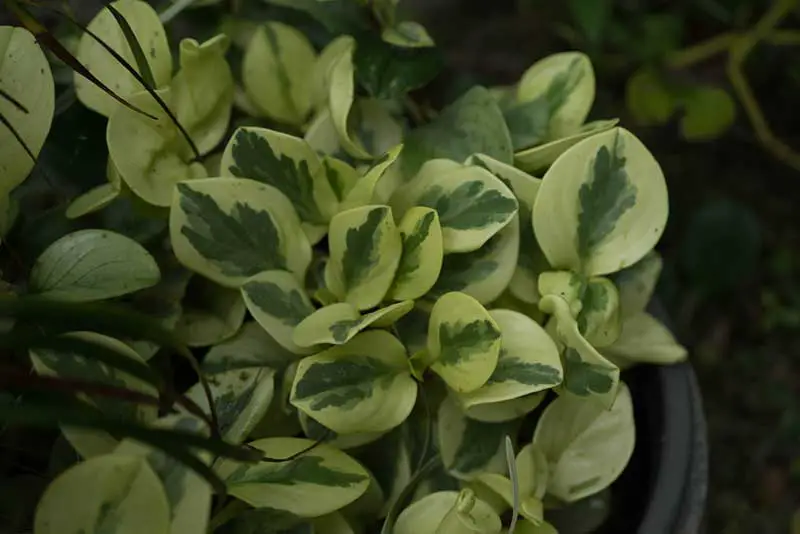
You may know this plant by Peperomia, or baby rubber. This interesting plant grows best at a room temperature of 65-75ºF (18-24ºC). Water this plant when you see that the top 1 inch of the soil is dry. Use a peat-based soil for this plant to thrive. Peperomia prefers a humid environment. This plant is non-toxic to cats and dogs.
Areca Palm
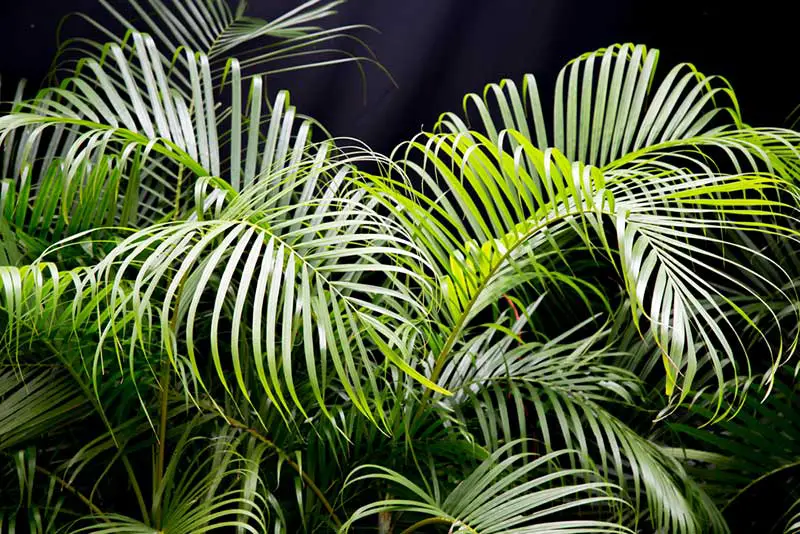
The Areca palm can be grown indoors without having to worry about your furry little friend. It’s non-toxic to cats and dogs. Areca Palms thrive in bright but indirect light. A common complaint is that the leaves turn yellowish-green. This is because the palm is getting way too much direct sunlight. It’s best to feed your Areca palm in the spring. Here is a guide I wrote on growing Areca Palm.
Bamboo Palm
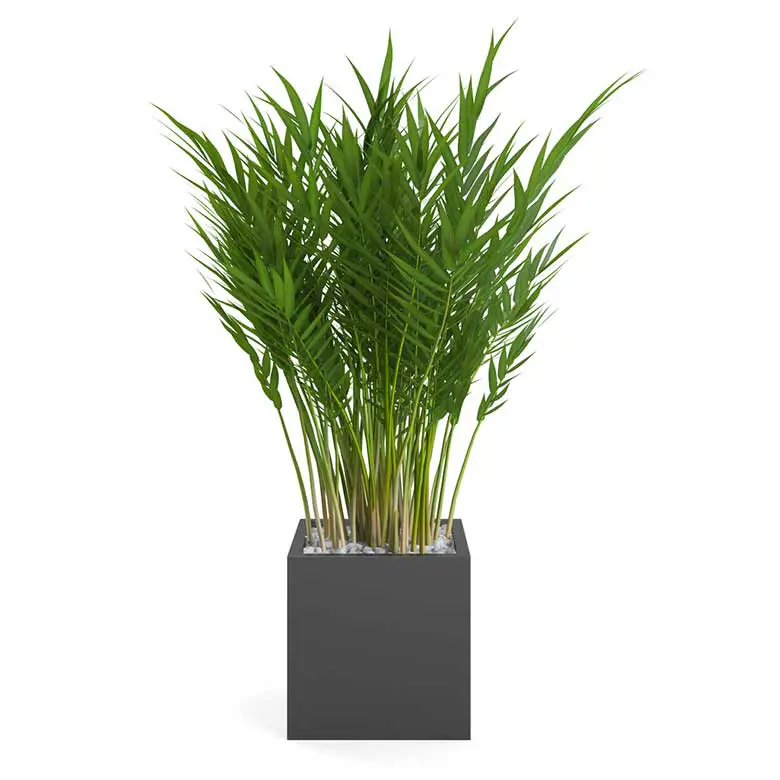
The Bamboo palm is another great cat-friendly plant to have indoors. It thrives in bright, but indirect light. Use a good quality potting soil. Water when soil is dry, use filtered, distilled or rainwater for best results.
Barberton Daisy
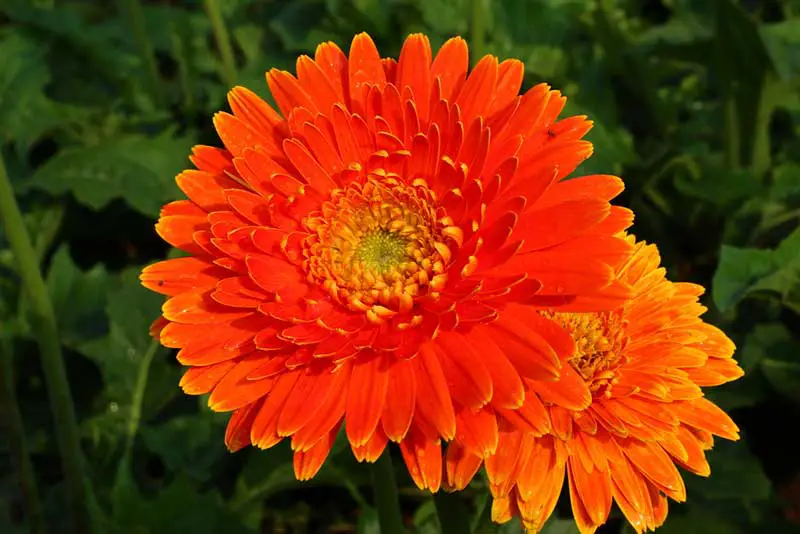
The Barberton Daisy, also called Gerbera, is from South Africa. This plant grows to be 24 inches tall. It is non-toxic for cats, dogs, and horses. Gerbera thrives at room temperatures of 55 – 75°F (13 – 24°C) .
It likes bright direct sunlight. A peat-based potting mix is recommended for this lovely plant. Keep soil moist at all times.
Blue Echeveria Succulent
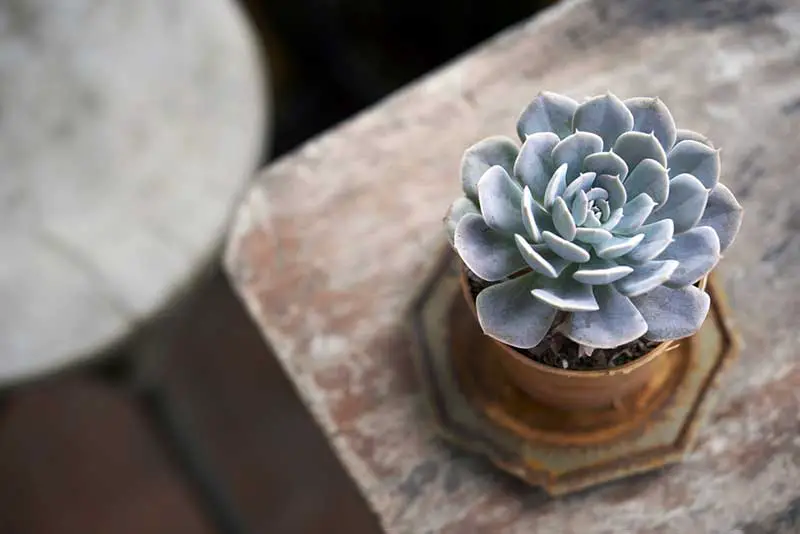
This cat-friendly succulent is also called Maroon Chenille, or Painted Lady. Blue Echeveria drought tolerant and very easy to care for. Keep in bright indoor light. Use a high-quality well-draining cactus succulent soil.
Blushing Bromeliad
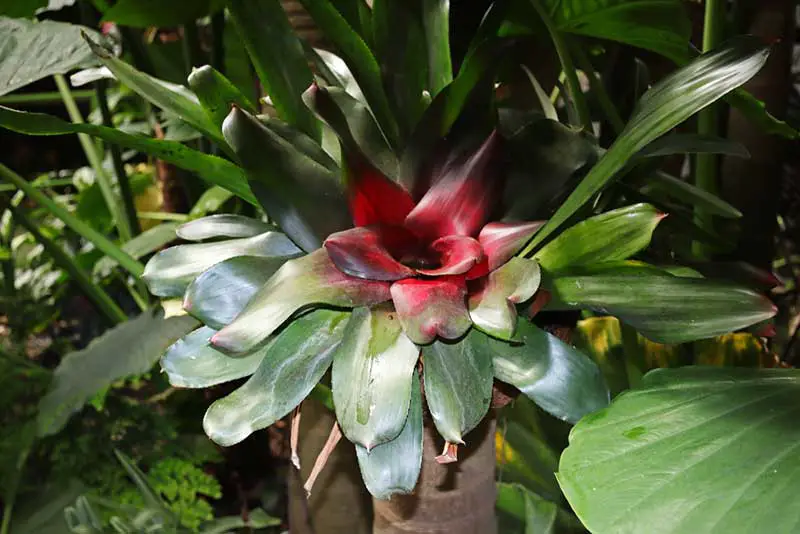
Blushing Bromeliad non-toxic plant for cats and dogs. It grows to be about 18 inches tall. Keep in bright light. Blushing Bromeliad will thrive in a loose soil mixture. Don’t overwater but keep the soil slightly moist. A common complaint is the leaves drying out. If you notice dry leaves, this typically is related to low-humidity. Mist your plants with water to increase humidity.
Boston Fern
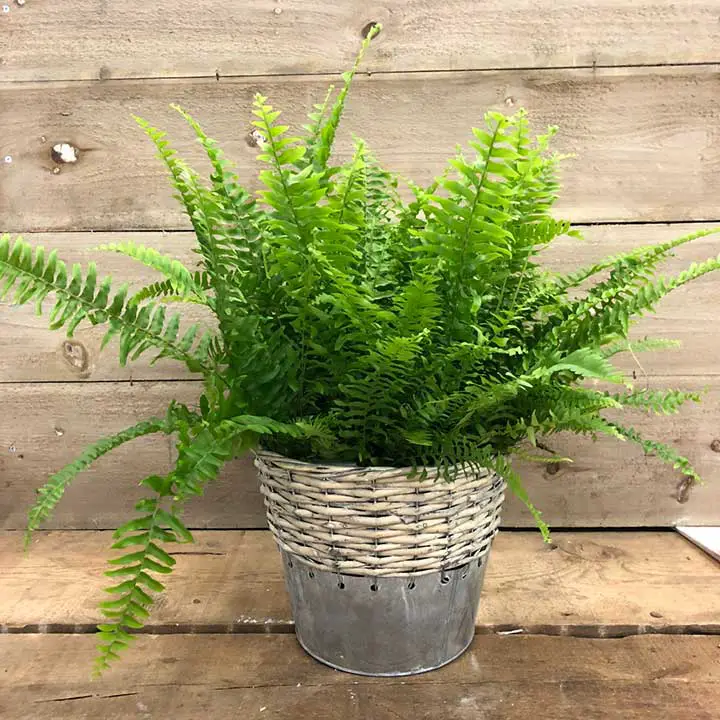
The popular Boston fern is seen in lots of homes across the United States. Boston fern is cat-friendly. Keep your fern at a room temperature of 60-75ºF (16-24ºC). It thrives in indirect sunlight. Keep the soil moist, but do not overwater. A good diluted fertilizer every 2 weeks is recommended.
Ponytail Palm
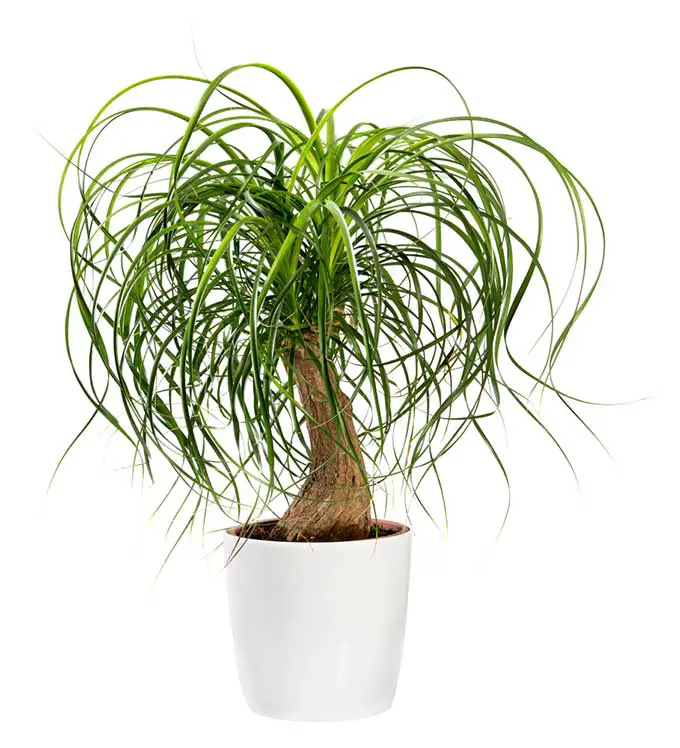
The Ponytail palm is another great cat-friendly option. This plant is so easy to grow! Keep it in bright light and don’t overwater it. The Ponytail palm will store water in its trunk base, so it can survive extended periods with no water.
Bride’s Bonnet (Queen Cup)
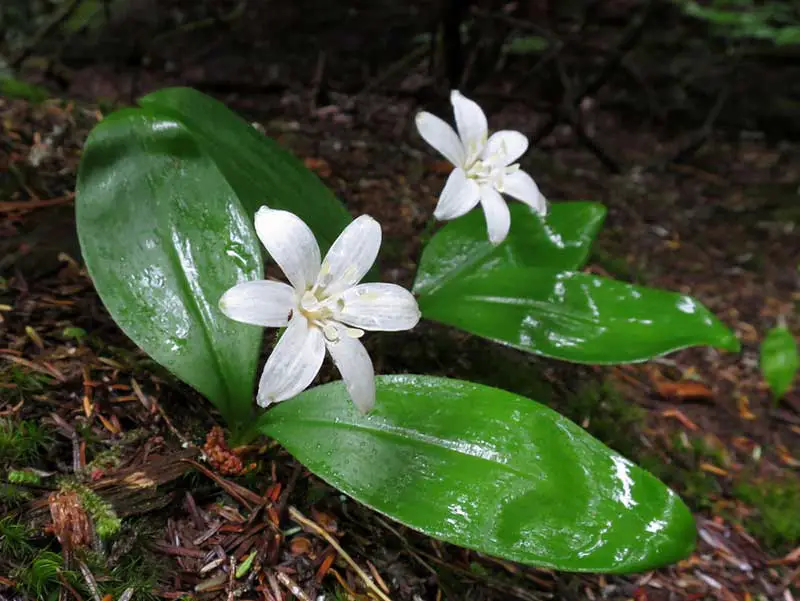
Bride’s Bonnet also called Clintonia is another great cat-friendly plant for the home. It has tongue-shaped leaves and produces pink, white or yellow flowers in the spring. Clintonia can grow to be 24 inches tall. Keep it in a low light environment in well-draining soil.
Buzzy Lizzie
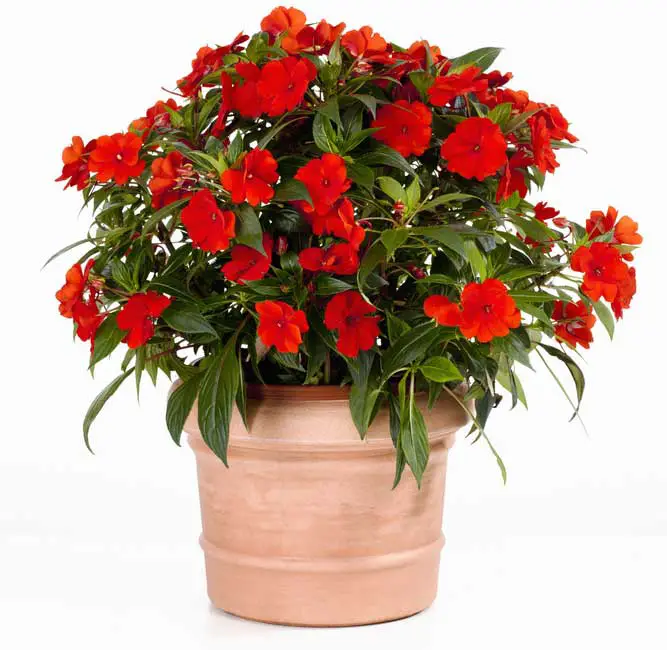
Buzzy Lizzie or often called Impatient Lucy is non-toxic to cats. this plant will grow to be 24 inches tall. It will thrive in bright light, and in well-drained soil. Make sure to keep soil moist watering when the top 1 inch of soil is dry.
Butterfly Ginger
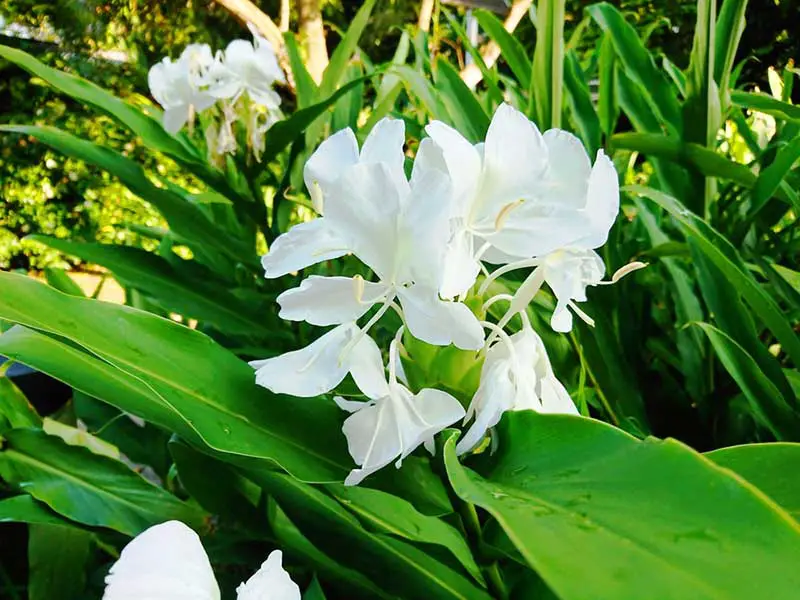
Butterfly Ginger is non-toxic to cats. It produces beautiful flowers in red, gold, white or orange. Grow butterfly ginger in indirect light. It thrives in well-drained soil. Keep soil moist but not soggy.
Rattlesnake Plant
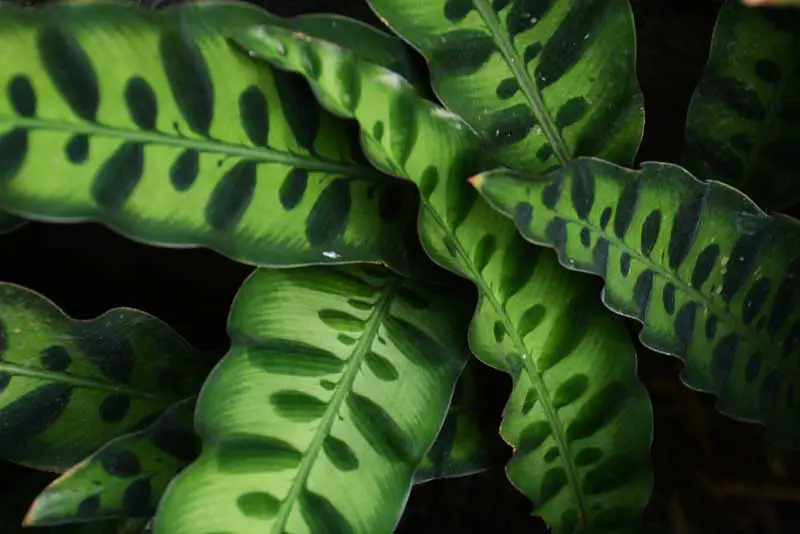
Another popular cat-friendly plant is the Rattlesnake Plant. The Rattlesnake Plant prefers a medium to a low light area in your home. It will thrive in well-drained moist soil. During the growing (May-August) season, water frequently to keep the soil moist. Water sparingly in the winter, only when the top 1 inch of the soil becomes dry. This plant will do great in a spot with lots of humidity.
Calathea
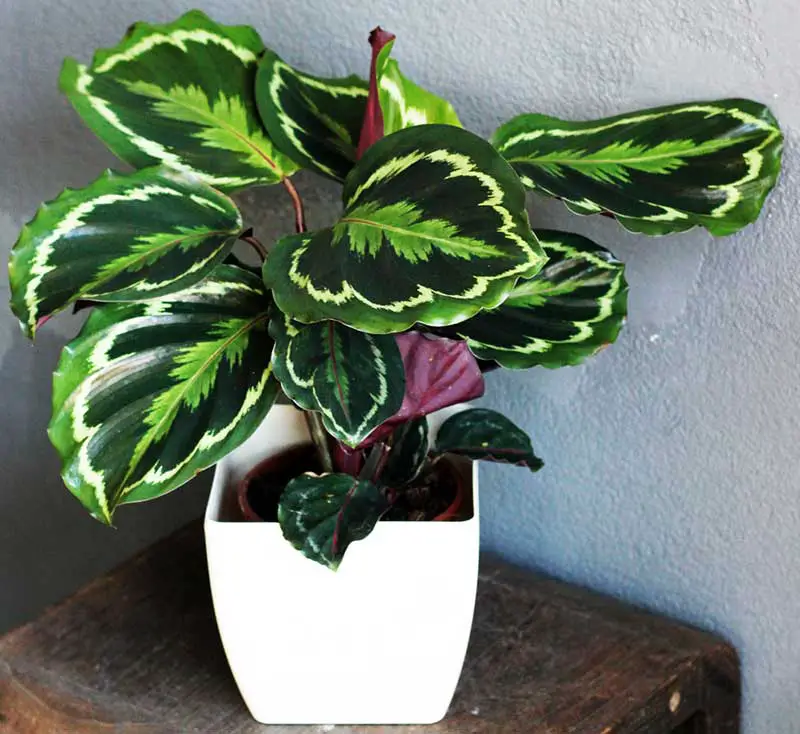
Calathea is known for its beautiful leaves with red undersides. Keep your Calathea away from direct sun. Partial shade or bright light is best. From Spring to Fall keep the potting mix moist at all times. Water more sparingly in the winter. This plant is sensitive to chemicals so use filtered water or rainwater. Fertilize once in the Spring, Summer, and Fall.
Bloodleaf Plant
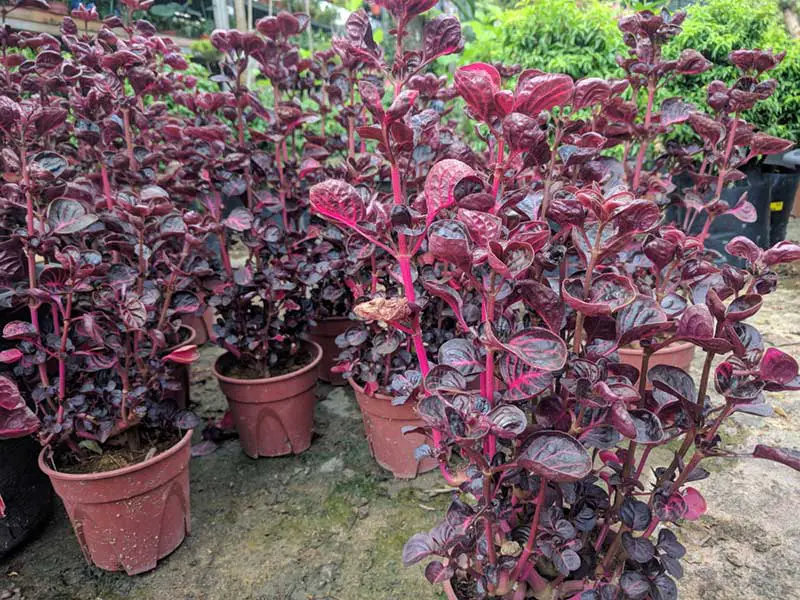
Bloodleaf Plant also called Chicken gizzard or beefsteak plant is another perfect cat-friendly option. Know for its glossy, bright red foliage. It makes a lovely houseplant. Bloodleaf thrives in warmer temperatures. This plant should be placed in a bright light spot. A south-facing window would be perfect. Water this plant when you feel the top 1 inch of soil is dry to the touch. After watering, try not to let it sit in water for a long period. Empty your pot saucer.
Holiday Cactus (Christmas, Thanksgiving, or Easter Cactus)
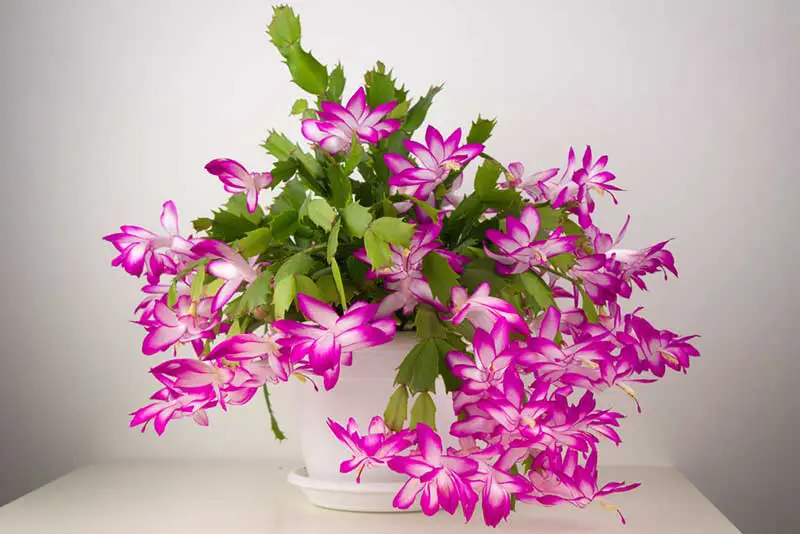
Who doesn’t love a Christmas Cactus? It’s great that this plant is non-toxic to cats because it’s one of my favorites! The Christmas Cactus prefers a room temperature of 65-75 degreesºF. And bright indirect light is best. Keep in well-drained soil, and water when the top 1 inch of the soil is dry.
For more information on Holiday Cactus, check out this guide on tips for Growing Thanksgiving, Christmas and Easter Cactus.
Button Fern
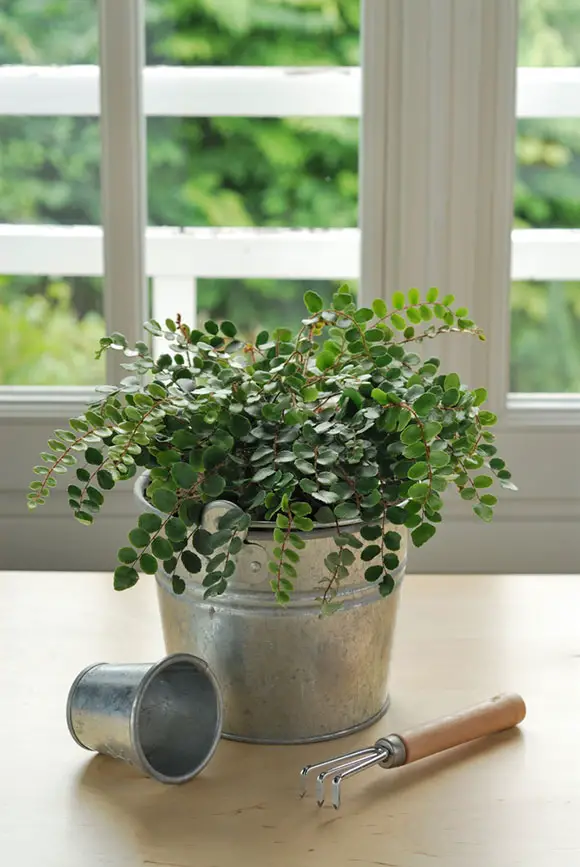
The Button Fern(Pellaea rotundifolia) is a nice non-toxic to cats plant. The button fern prefers bright indirect light. Water when the top 1 inch of the soil is dry. Button ferns do not like soggy soil. Also, keep your plant in a humid environment. If you notice your leaves are drooping. Increase the humidity by misting the leaves with water regularly into the leaves look healthy again.
Easter Lily Cactus
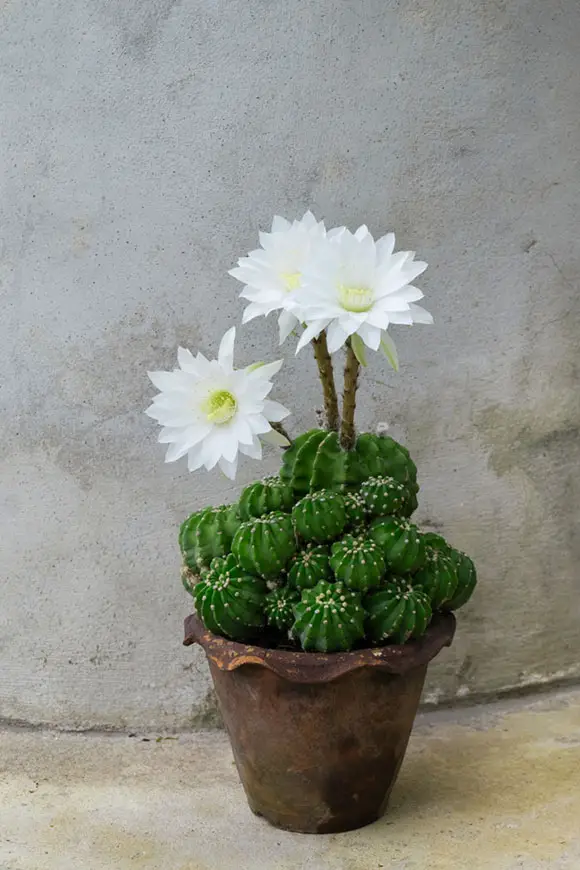
The Easter Lily Cactus will produce gorgeous White, Pink, or Yellow large flowers. The Easter lily blooms in the springtime around Easter. Unfortunately, their beautiful flower blooms last about a day or two.
Friendship Plant (Pilea involucrata)
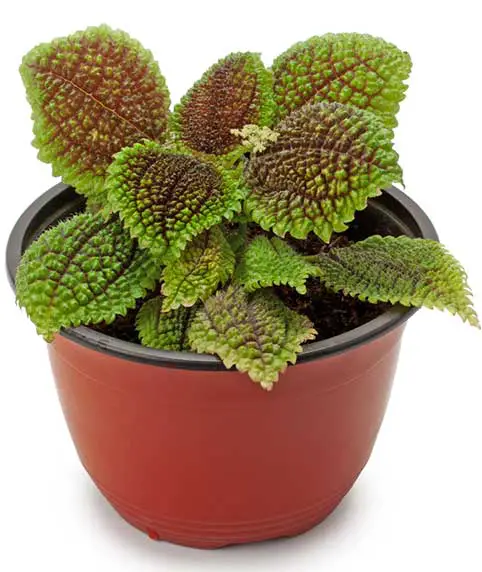
The Friendship Plant (Pilea involucrata) is another option to consider if you have a cat living with you. This plant thrives in high humidity environments. keep your plant in a location that is at a room temperature of 64-75 degreesºF. The Friendship Plant does not like direct sunlight. If you notice that the leaves are yellowing, it might be getting too much sunlight. Water sparingly letting the topsoil dry out before watering again. Fertilize in the summer every 2 weeks.
Gold-Fish Plant
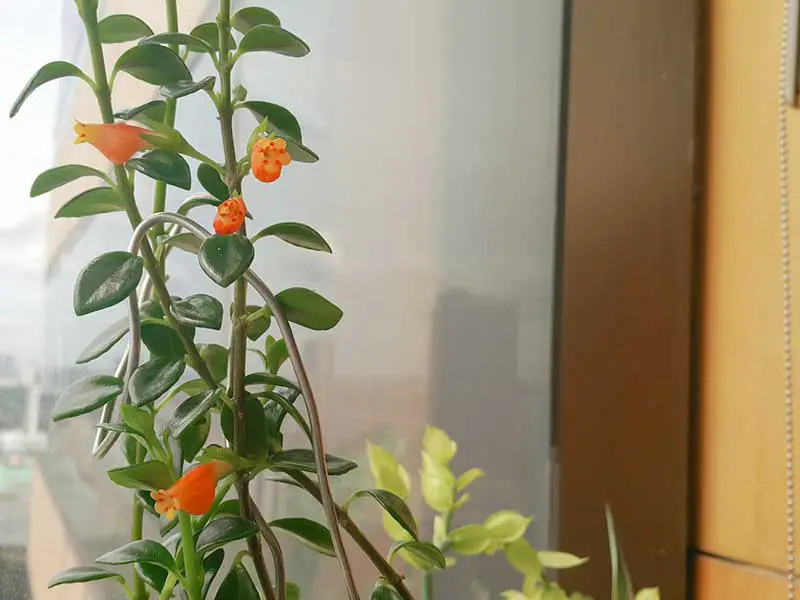
The Gold-Fish Plant (Columnea gloriosa) produces orange blossoms that many say look like goldfish. The Gold-Fish plant likes a well-drained soil, do not overwater. Goldfish plants need around 13 hours of direct light every day to produce blooms. They also thrive in a location where the temperature is between 65 and 75 degrees. If the plant gets too cold you will notice that it will start dropping its leaves and eventually will die.
Haworthia
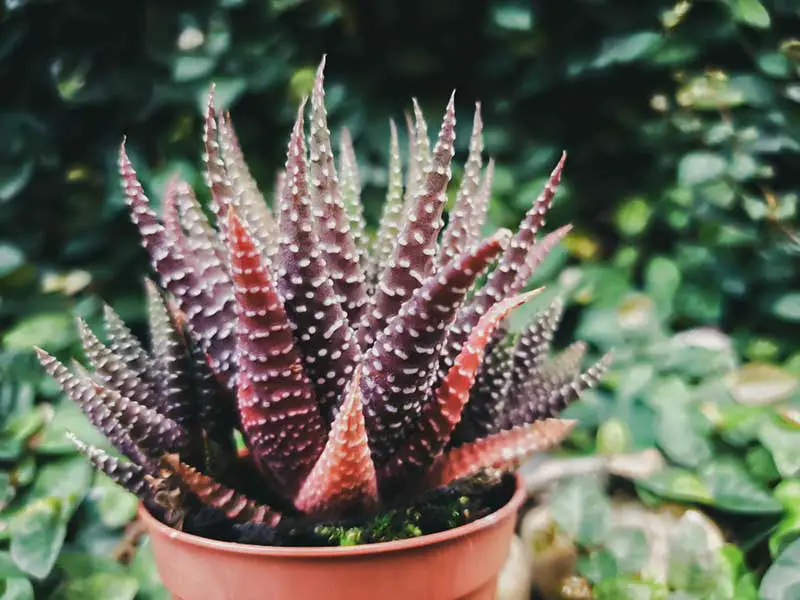
Haworthia is a beautiful spikey succulent. This is another cat-friendly option. Keep Haworthia in bright indirect sun. Water sparingly when the top 1 inch is dry to the touch. This typically is once per week,
Wax Plant (Hoya Plant)
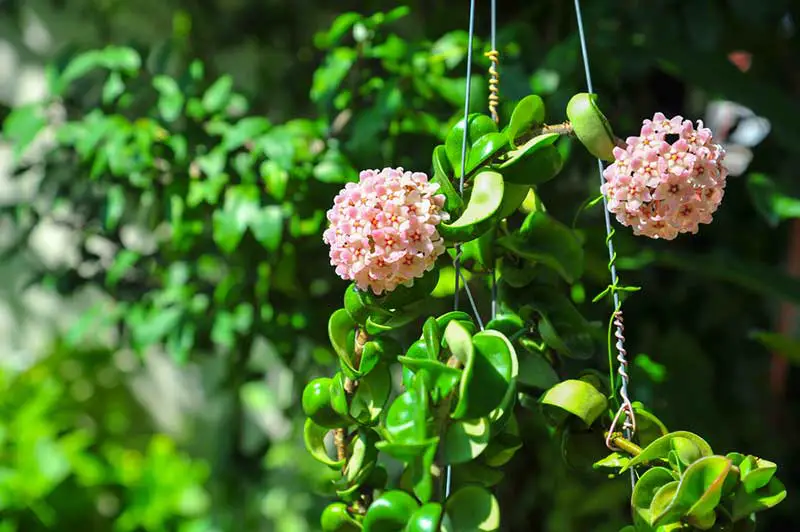
The Wax plants bring back so many memories! I remember my grandmother having these in her living room. A Hoya plant needs soil that is rich, aerated and well-drained. During the spring and summer, these plants crave water, and they need quite a bit of it to remain hydrated.
Toad Spotted Cactus
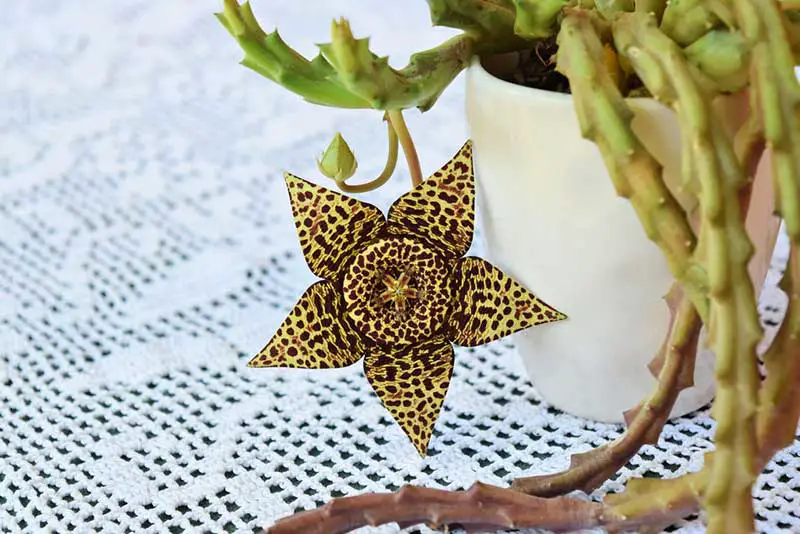
The Toad Spotted Cactus (Stapelia Variegata) is non-toxic to Dogs, Cats, and Horses. The flowers on the succulent plant are just spectacular! This plant is a great option to grow indoors if you can provide the right environment for the plant to thrive.
Thimble Cactus
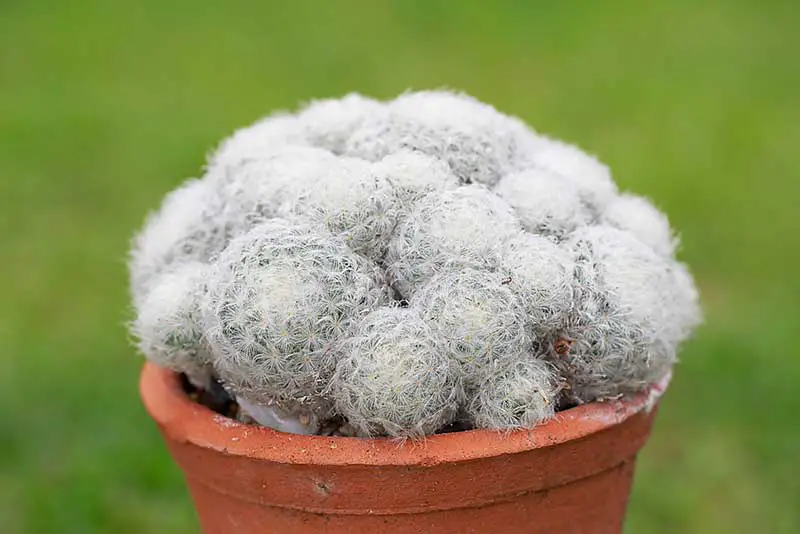
The Thimble Cactus is green and is covered in interwoven white spines. The Thimble Cactus will thrive in full sun to partial shade. It’s non-toxic to cats. Water when the top one inch of the soil becomes dry.





